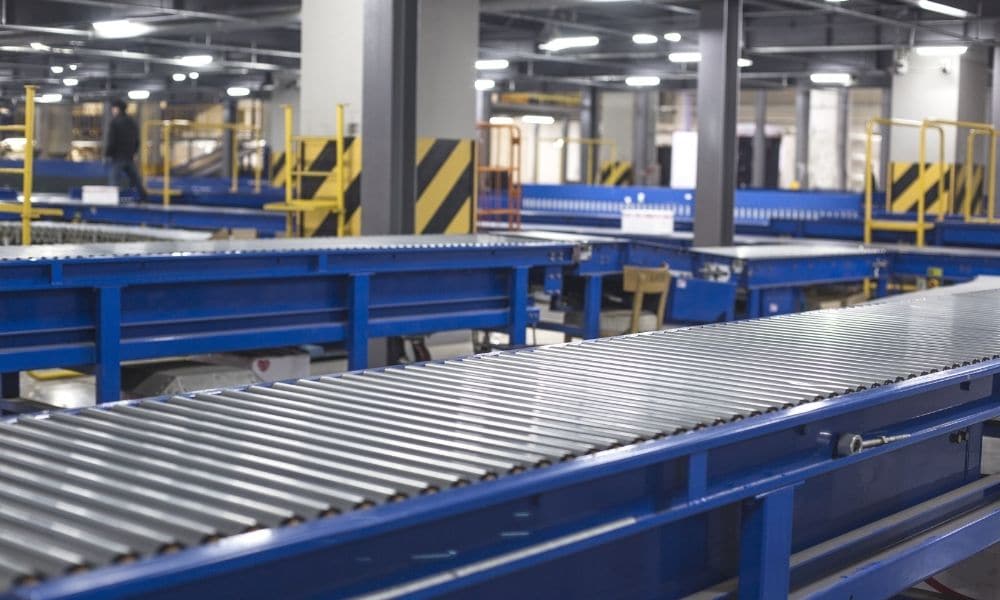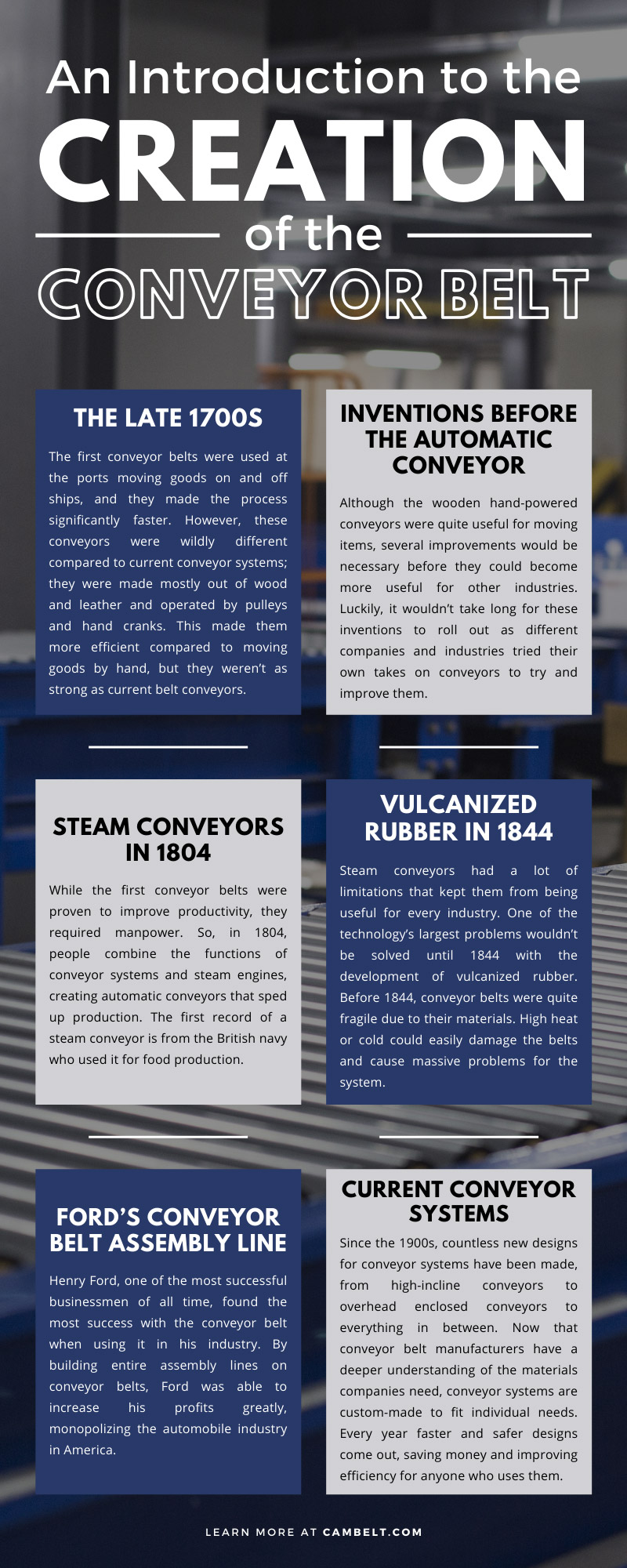
You can find conveyors in just about every industry, from farms to mines to processing plants. But the widespread use of conveyor systems in all these industries is relatively new; they were invented not that long ago. In order to help put it all into perspective, here’s an introduction to the creation of the conveyor belt and how it has progressed through time.
The Late 1700s
The first conveyor belts were used at the ports moving goods on and off ships, and they made the process significantly faster. However, these conveyors were wildly different compared to current conveyor systems; they were made mostly out of wood and leather and operated by pulleys and hand cranks. This made them more efficient compared to moving goods by hand, but they weren’t as strong as current belt conveyors.
Inventions Before the Automatic Conveyor
Although the wooden hand-powered conveyors were quite useful for moving items, several improvements would be necessary before they could become more useful for other industries. Luckily, it wouldn’t take long for these inventions to roll out as different companies and industries tried their own takes on conveyors to try and improve them.
Steam Conveyors in 1804
While the first conveyor belts were proven to improve productivity, they required manpower. So, in 1804, people combine the functions of conveyor systems and steam engines, creating automatic conveyors that sped up production. The first record of a steam conveyor is from the British navy who used it for food production.
Vulcanized Rubber in 1844
Steam conveyors had a lot of limitations that kept them from being useful for every industry. One of the technology’s largest problems wouldn’t be solved until 1844 with the development of vulcanized rubber. Before 1844, conveyor belts were quite fragile due to their materials. High heat or cold could easily damage the belts and cause massive problems for the system. The invention of vulcanized rubber solved this problem as it was much more durable and resistant to different temperatures. The introduction of vulcanized rubber belts made conveyors widely more applicable to more industries.
Coal and Ore in 1892
The next step in conveyor history delves into the use of conveyors for mining industries. Before using conveyor systems, mining companies had to use railcar systems to haul anything they mined during their work. This was highly inefficient and cost a lot of money as the rail systems couldn’t move once it was in place. However, conveyor systems solved quite a few of these issues. They were able to carry large amounts of mined materials and could even move after they emptied the mine. This saved tons of money and profits for the companies and helped the American mining industry grow even more.
Steel Conveyors in 1901
Soon after that, the invention of truly heavy-duty conveyor belts became widely available. Thomas Robins created more efficient conveyor systems for the Edison Ore-Milling Company, developing systems that use steel rollers and rubber belts to carry heavy materials without breaking down. His design even won the grand prize at the Paris Exposition. At the same time, steel conveyor belts became more popular in the food industry, spreading to other countries in just a few years.
Ford’s Conveyor Belt Assembly Line
Henry Ford, one of the most successful businessmen of all time, found the most success with the conveyor belt when using it in his industry. By building entire assembly lines on conveyor belts, Ford was able to increase his profits greatly, monopolizing the automobile industry in America. Although it took him several years to fully implement the new process, his process managed to reduce the time it takes to make a car from 12 hours to just an hour and a half. This changed how the world saw conveyor systems as every industry tried to recapture Ford’s success.
Synthetic Belts in 1960
During WWII, the United States limited the use of many different resources and relocated them to the war effort. This meant that the materials to create conveyor belts were harder to obtain, so many places started using new materials. Synthetic belts were the result; they were more resilient and flexible than anything used before. They went on to become a standard material for new belts, along with several other materials. Nowadays, companies choose their belt materials based on what they’re moving.
Plastic Modular Belts 1970s
More recently, more belt styles have become more popular, including the 1970s plastic belt. Rather than being made of a single belt, plastic belts have interlocking blocks that can harry heavy items. They’re easy to replace, which saves money on repairs in comparison to other belt materials and styles. They also lack the problems with rust and corrosion that some systems face, making them much safer for food processing. Some designs use plastic materials for their conveyor systems to limit exposure to food.
Current Conveyor Systems
Since the 1900s, countless new designs for conveyor systems have been made, from high-incline conveyors to overhead enclosed conveyors to everything in between. Now that conveyor belt manufacturers have a deeper understanding of the materials companies need, conveyor systems are custom-made to fit individual needs. Every year faster and safer designs come out, saving money and improving efficiency for anyone who uses them.
Smart Conveyor Systems
One popular trend is the invention of smart conveyor systems. These systems link up using computers to better track materials and efficiently process anything that needs to get moved. They can even be controlled via computers so items get built remotely, which vastly increases production speeds. This is a major technological advancement that’s still improving. Soon, smart conveyor systems will handle a lot more than they did in the past.
This article has been an introduction to the creation of the conveyor belt and how it’s grown over time, from its humble beginnings as a hand-powered tool to the electronic powerhouse it is today. You can find belt conveyor system manufacturers all over the country now as they create custom systems for any company that needs them.

